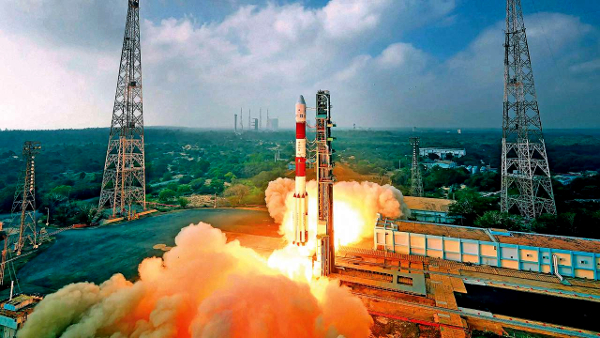The Indian Space Research Organisation is working on a new technology where it will use the last stage of the PSLV rocket for space experiments. It will perform a technology demonstration of this new system when it launches the PSLV C44 rocket in January. The organisation will invite students and scientists to make use of this new technology
Can a dead rocket in space be anything but debris? Isro believes it might actually be useful. Feted for its frugality and tech savvy, the Indian Space Research Organisation is working on a new technology where it will use the last stage of the PSLV rocket for space experiments. It will perform a technology demonstration of this new system when it launches the PSLV C44 rocket in January.
Talking to TOI here, Isro chairman K Sivan said, “Normally, the last stage of a PSLV rocket after releasing the primary satellite in space becomes dead and categorised as debris. It remains in the same orbit as that of the released satellite. Now, we are working on a new technology where we will give life to this “dead” last stage of PSLV, also called PS4 stage, for six months after its launch. This rocket stage will double up as a satellite. This will be the most cost-effective way to perform experiments in space as we don’t have to launch a separate rocket for the purpose.” He said that “India is the only country in the world that is working on this new technology”.
Explaining the technology, the chairman said, “The rocket stage of PSLV C44, which will be carrying a microsat as the primary satellite in January, will be made alive with the help of new systems that will include batteries and solar panel. Even after the primary satellite separates from the PSLV, the last stage of the rocket will remain active and can be used as an experimental platform for new space technologies. Students or space scientists can use this “alive” rocket stage for space experiments for free. They can attach their small experimental module or satellite (micro or nano) in the last stage and can perform experiments in space once the PSLV delivers the primary satellite into its orbit.” He said that Isro “can do the same with the GSLV rocket as well where we can use its last stage as an experimental platform”.
Sivan said Isro is going to make an “announcement of opportunity in a few days to invite proposals from students and space scientists to make use of this new technology.”
Till now, space agencies around the world can use a rocket only once to deliver satellites in space. Elon Musk-promoted SpaceX is the only exception as the US private space agency has mastered the technology of repeating the same rocket stage for relaunches. However, SpaceX’s experiments with its Falcon 9 rocket are confined to the first stage of the rocket. It has also never experimented with the last stage.
Source: TNN
Image Courtesy:DNAIndia
You may also like
-
New Heat-Based Approach To Cancer Treatment Can Reduce Chemotherapy Doses
-
Scientists Take A Major Step Towards Unification Of Classical & Quantum Gravity
-
India Graphene Engineering and Innovation Centre (IGEIC) Under the Vision of Viksit Bharat@2047 Launched
-
New High-Performance Gas Sensor can Monitor Low Level Nitrogen Oxides Pollution
-
Antidepressant Drug can be Repurposed for Treating Breast Cancer
